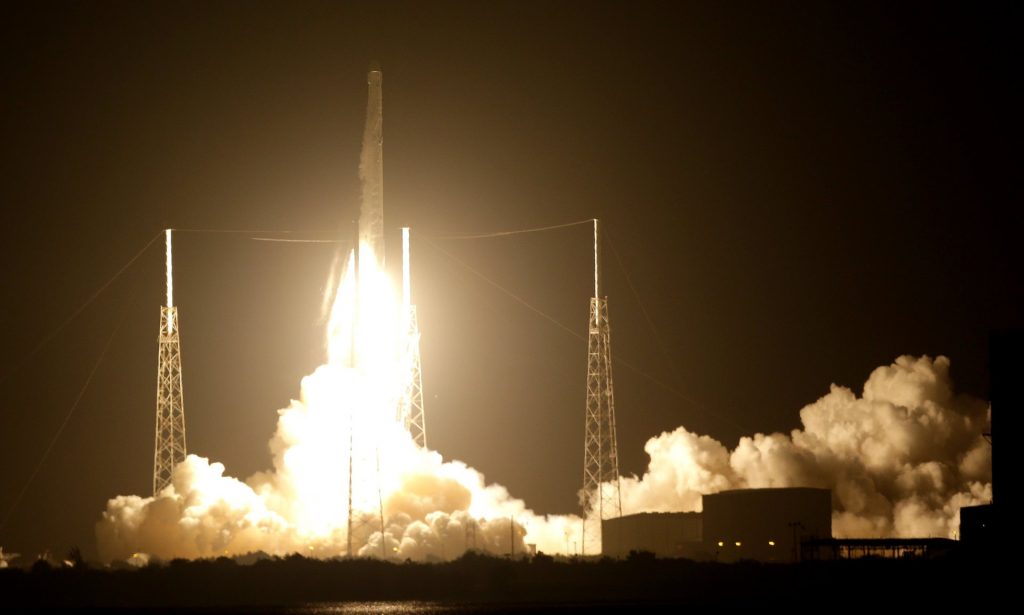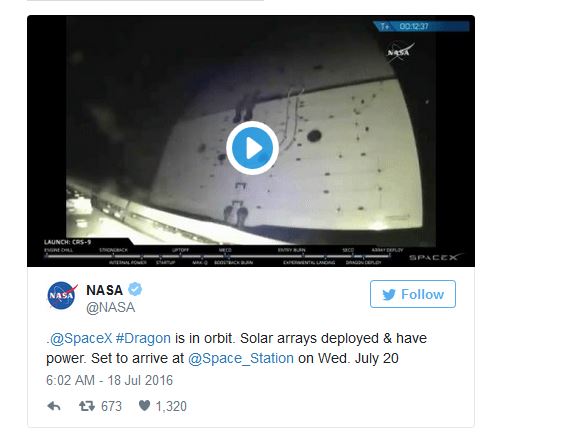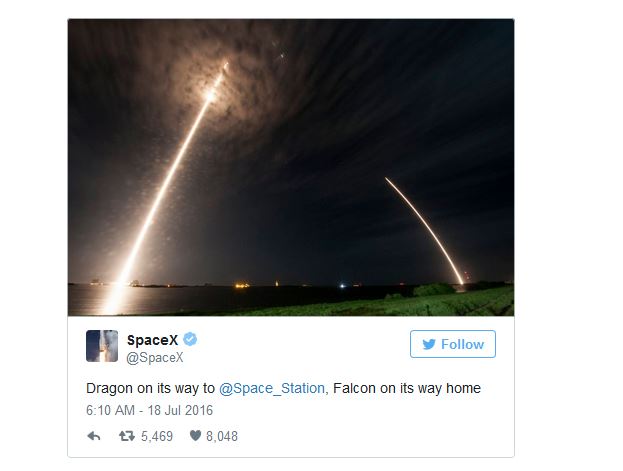
Photograph: John Raoux/AP
SpaceX has sent a new-style space station docking port into orbit en route to the International Space Station.
An unmanned Falcon rocket was launched early on Monday in Florida carrying 2,267kg (5,000lbs) of supplies in the Dragon space capsule along with the new docking port.
The Dragon successfully made it into orbit, according to Nasa, and is due to arrive at the space station on Wednesday.
It is SpaceX’s second shot at delivering a new-style docking port for Nasa. The last one went up in smoke over the Atlantic last year, a rocket accident casualty.
SpaceX also managed to bring the used first-stage booster back to Cape Canaveral Air Force Station for a vertical landing – only the second such land landing for an orbital mission and the ultimate in recycling.
Nasa needs this new docking ring to be set up on the space station so that Americans can fly up in crew capsules next year.
“I know how critical this is for Nasa,” Hans Koenigsmann, SpaceX’s vice president for mission assurance, said during a press conference on Saturday.
Advertisement
A second docking ring is due to be delivered in 2017, Nasa said.
“Each commercial resupply flight to the space station is a significant event. Everything, from the science to the spare hardware and crew supplies, is vital for sustaining our mission,” said Kirk Shireman, Nasa’s International Space Station program manager.
“With equipment to enable novel experiments never attempted before in space, and an international docking adapter vital to the future of U.S. commercial crew spacecraft, we’re thrilled this Dragon has successfully taken flight.”
Owned and operated by Musk, the technology entrepreneur who founded Tesla Motors Inc, SpaceX is developing rockets that can be refurbished and re-used, potentially slashing launch costs. So far, it has successfully landed a Falcon on the ground once and on an ocean platform in three out of its last four attempts.
SpaceX intends to launch one of its recovered rockets as early as autumn of this year, Koenigsmann said.
Landing the rocket is a secondary goal. The main mission is placing the Dragon capsule into orbit and sending it on a two-day trip to the station.
The capsule holds nearly 5,000 lbs (2,268 kg) of food, supplies and equipment, including a miniature DNA sequencer, the first to fly in space.
The metal docking ring, built by Boeing, is 2.4m (7.8ft ) in diameter. After its attachment to a berthing port on the station, it will serve as a parking space for commercial spaceships under development by SpaceX and Boeing. The manned craft are scheduled to begin test flights next year.
Since the US space agency retired its fleet of space shuttles five years ago, the United States has depended on Russia to ferry astronauts to and from the station at a cost of more than $70 million per person.



